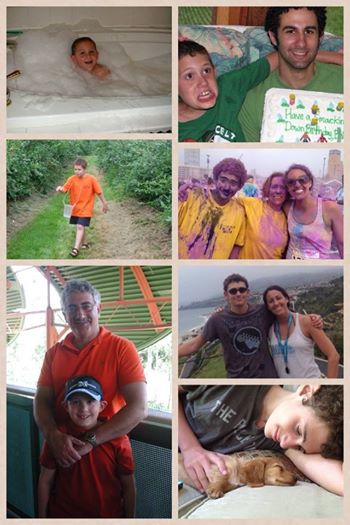Yesterday I went through the day in a really bad mood for a really dumb reason: some terribly unflattering photos of me were posted on Facebook.
My husband snapped the photos out of love yesterday morning, capturing a tender moment between me and our dogs. But it was a humid morning, I had not slept well and my hair and face were not ready for prime time. Worse still, he shot from below where I was sitting, aiming the camera up into my face, chin and collapsed body frame. The result was a stark reminder that I am losing the battle with Father Time. After I got over the shock, I just sulked.
In the era of global terrorism, opioid crises, health care reform and income inequality, this is a really vain and stupid thing to get upset about. But coming on the heels of hearing that I have osteoporosis and on weeks of soggy weather that have been terrible for my hair, the photos were a shock. So let me relieve the mystery, put vanity aside, summon all the courage I have and share one of them:

And here’s another one from a few months ago, which is how I prefer to view myself:
 Which one is the real me? It’s probably both of them, depending on how good I feel, how much care I’ve put into my face and hair that day, whether I consulted my color wheel and how rested or stressed I am. But as we age the costs of slacking off get higher, and nothing is more unforgiving than a camera and the wrong lighting. Goldie Hawn, who always looks fantastic in photos but famously caught flack for this un-retouched photo of her going to the gym, most likely understands this.
Which one is the real me? It’s probably both of them, depending on how good I feel, how much care I’ve put into my face and hair that day, whether I consulted my color wheel and how rested or stressed I am. But as we age the costs of slacking off get higher, and nothing is more unforgiving than a camera and the wrong lighting. Goldie Hawn, who always looks fantastic in photos but famously caught flack for this un-retouched photo of her going to the gym, most likely understands this.
And so do most women middle-aged and older. My friends and I have shared some lighthearted moments about what control freaks we can be as soon as a camera points our way. One friend likes to joke that she tells her kids not to pull the plug until she wastes away a few dress sizes.
A few weeks ago at our son’s graduation party a male friend wanted to take a group photo of ladies, all of us over 40. We all demanded that he shoot us from above to minimize any sagging, and he obliged – squeezing out a few shots before his face turned mischievous and he dropped to his knees, capturing one more photo from that terribly unflattering angle. The shocked and protesting looks on our faces in that photo – which I’d never share here without my friends’ permission — were priceless.
As I close in on my 63rd year, I’ve squirmed in that uncomfortable spot between vanity and self-acceptance. Somewhere is a happy medium between looking unattractively vain (like you’ve obviously “had work done”) and pulling the ripcord and letting it all go. I haven’t found it yet. I’ve dieted and not dieted, abstained and overindulged in wine, walked daily and spent too much time in a chair, swum laps for exercise and avoided the water because of what it will do to my skin and hair, penciled and not penciled the eyebrows I over-plucked in my 20s. Jobs, family obligations, unread newspapers and unfolded clothes all get me off track from the increasingly Herculean effort needed to look youthful.
So what’s the remedy for those of us who haven’t aged as well as Audrey Hepburn? Is it an attitude adjustment or more time at the gym and the makeup mirror?
Maybe an easy fix is just avoiding cameras altogether, or insisting that we have veto power over photos that don’t paint us in our best light. Even Marilyn Monroe insisted on viewing contact sheets of her before any photos were printed, and would draw a big “X” on the photos she didn’t like. At the very least we can bully the photographer into standing on a ladder for any photos.
Or maybe the answer is just lightening up and realizing that attractive days and non-attractive days are just part of the aging experience, and that inner beauty is what matters, as hackneyed as it sounds. Maybe we should all be less critical of ourselves – I’ve found that turning a photo of yourself upside down helps you view yourself with the same dispassion as others.

Maybe we should just focus on what we’ve accomplished over the years instead of the muscle tone, dewiness and skin elasticity we’ve lost.
That makes so much sense, but why is it so hard?
What do you think?






